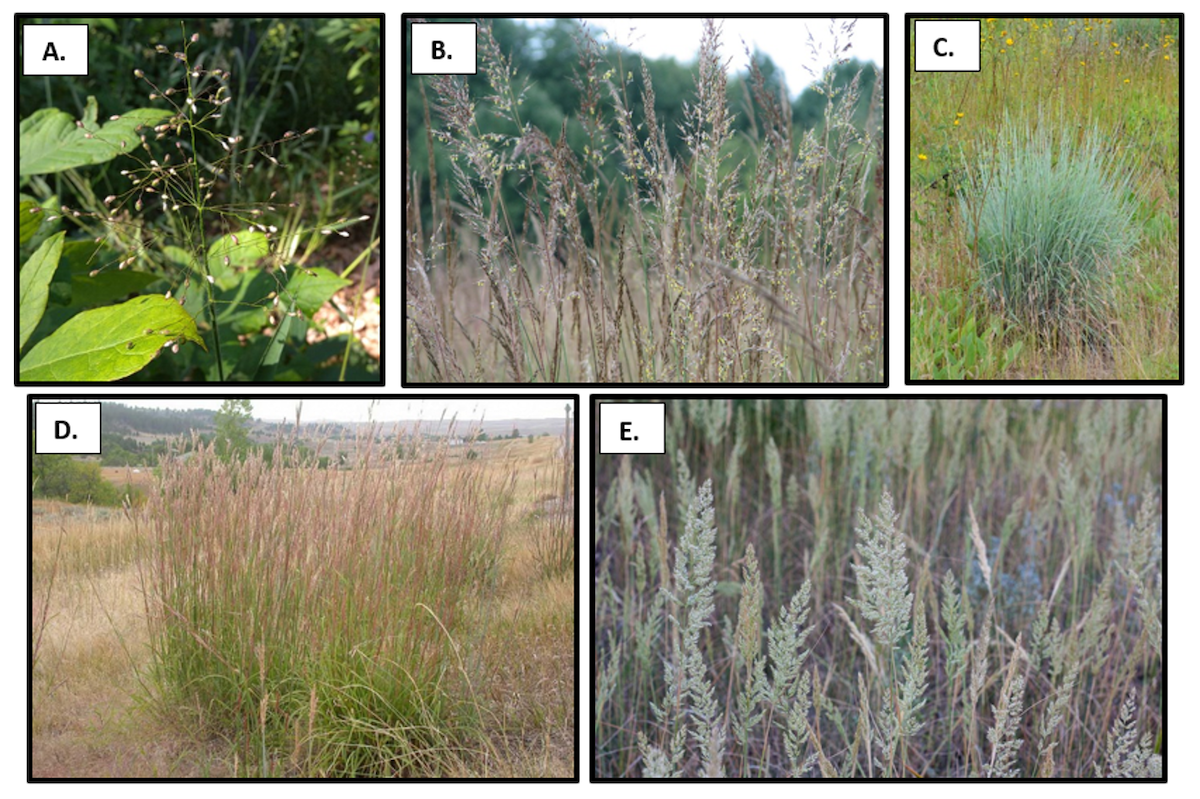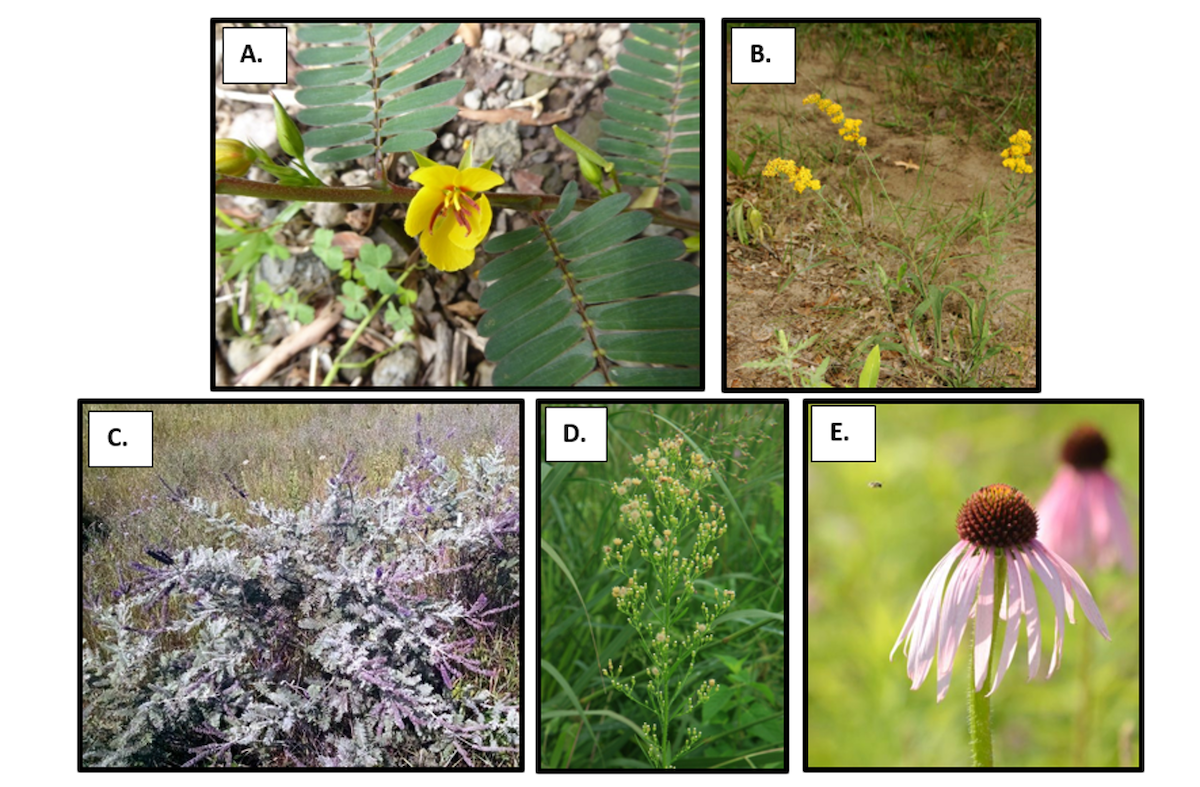
Photo by Michael R Jeffords.



Photo by Michael R Jeffords.
Currently, the state’s original prairies cover an estimated 2,470 ha (6,104 acres), which is less than one percent of historic prairie coverage in the 1600s. Furthermore, less than 971 ha (2,400 acres) of the original prairie habitat is considered high quality. These untouched prairie habitats are referred to as remnant prairies and are fragments of the original, vast prairies which once carpeted Illinois. Sand prairies encompass a very small fraction of the remaining 2,470 ha of prairie habitat. An even smaller percentage are classified as remnant sand prairies or high-quality habitat within Illinois.

The Pleistocene Epoch was a period characterized by repeated cycles of glaciation beginning around 2.6 million years ago, with massive ice sheets periodically covering large parts of the Northern Hemisphere. The Laurentide ice sheet was the most recent sheet to form in the eastern part of North America. Large extensions of these ice sheets, known as lobes, reached into the central lowlands of Illinois. When studying the cycles of glacial movement during the Pleistocene, the first major glaciation event was known as the pre-Illinoian Episode which took place over 425,000 years ago. This episode moved enormous deposits of sand and gravel across much of the state.
Thousands of years later after continued glacial cycling, a mega flood occurred which reshaped the rivers within Illinois and carried large sand deposits throughout the state. This flood is known as the Kankakee Torrent. After the flood had dissipated, the Illinois River valley was filled with even more sand and gravel creating thick and extensive outwash deposits. Much of this deposited material can be found in central Illinois throughout the lowland areas. The major rivers throughout Illinois had been reshaped by glacial events and filled with outwash for thousands of years. The outwash deposited in these rivers, large and small, had created valuable, yet scarce habitat called sand prairies.

During times in which the barren sand areas had little to no vegetation to stabilize the substrate, wind transported the light, sandy sediment to nearby areas where sand prairies could expand. Regions of Illinois that contain significant amounts of wind-blown sand deposits follow the major rivers which captured much of the glacial outwash. As the sand deposits settled, grasses and other vegetation were able to begin growing.
Different plant communities occur in sand prairies across the state due to water holding capacities formed by underlying substrates, seasonal rainfall, and high-water tables. In wet sand prairies, where water retention is higher than dry sand prairies, plant species such as reed grass (Calamagrostis spp.), prairie cordgrass (Spartina pectinate) and sedges (Carex spp.) are more prevalent. The dry sand prairies, which do not hold water as efficiently and produce poor nutrient accessibility, have more drought tolerant grass species including little bluestem (Schizachyrium scoparium) and white-haired panic grass (Dichanthelium villosissimum).
The sand prairie habitats in Illinois contain sandy, well-drained soils with little to no organic topsoil. The rapid movement of water through sand leaves little moisture and nutrients for plants to uptake. The soil pore spacing is quickly drained by gravitational forces shortly after a rainfall event which generates the dry environment. The grass species often occupying sand prairies have an adapted root structure for quick water absorption to compensate for the water scarcity. The bare, sandy soil quickly absorbs and radiates heat, becoming hot during the warm seasons and colder during the cold seasons. This characteristic also affects the water availability and the vegetation which can grow in these prairies.
Following the last glaciation event, a significant warming period referred to as the Xerothermic Period occurred between 10,000 to 7,000 years ago. This created a much drier and warmer climate than any previous interglacial event. The Xerothermic theory explains how various species, both plant and animal, migrated into areas that were not uniform with their original boundaries at the time.
Drought tolerant species benefitted during this time enabling them to expand their distribution. Notable species which had dispersed from their original boundaries were strongly xerophytic species such as hairy gramma (Bouteloua hirsute), blue gramma (Bouteloua gracilis), tumble grass (Schedonnardus paniculatus), and prickly pear (Opuntia spp.).

Common vegetation which grows in sand prairies include short grass, tall grass and forbs. Examples of short grasses include little bluestem (Schizachyrium scoparium), June grass (Koeleria macrantha), and white-haired panic grass (Dichanthelium villosissimum). The most common forbs associated with sand prairies are sensitive pea (Chamaecrista nictitans), leadplant (Amorpha canescens), purple cone flower (Echinacea purpurea), prairie milkweed (Asclepias sullivantii), gray goldenrod (Solidago nemoralis), and prickly pear cactus (Optunia spp.)
These sand prairie species can tolerate a wide range of soil texture, water availability, and climates but are not restricted to the habitat. For example, big bluestem (Andropogon gerardi) and Indian grass (Sorghastrum nutans) can tolerate the dry conditions in sand prairies but can grow much larger in wetter conditions created in tallgrass prairies.

The sandy soils and well-adapted vegetation in sand prairie habitats creates a unique environment for many animals as well as endangered and threatened species within the state. As previously reviewed, along the major rivers within Illinois are large sand deposits which form the foundation of sand prairie habitat.
Various species rely heavily on these habitats which are scattered and limited. The connections between species and sand prairies emphasizes the need to conserve and restore this habitat within Illinois. Some common reptilian and amphibian species associated in sand prairies are the six-lined racerunner (Cnemidophorus sexlineatus), American toad (Anaxyrus americanus), bullsnake (Pituophis melanoleucus), slender glass lizard (Ophisaurus attenuatus), and eastern spadefoot toad (Scaphiopus holbrookii).
Many bird species utilize sand prairies as well as other prairies for habitat and resources. Facultative (occurring opportunistically dependent on circumstances) grassland bird species such as the eastern meadowlark (Sturnella magna), dickcissel (Spiza americana), field sparrow (Spizella pusilla), and savannah sparrow (Passerculus sandwichensis) eat the seeds of grasses found in sand prairies.

Some mammalian predators which make use of these habitats include the red fox (Vulpes vulpes), gray fox (Urocyon cinereoargenteus), and coyote (Canis latrans). Along with birds of prey, such as the short-eared owl (Asio flammeus), northern harrier (Circus cyaneus), and Swainson’s hawk (Buteo swainsoni), these predators use the open habitat to catch prey. Small rodents, amphibian, and reptiles, as previously mentioned, are all dietary items for these larger predators within sand prairies.
Sand prairie habitats are sparse and scattered throughout a majority of the upper half of the state. These unique habitats support a diverse community of plants and animals. Some species of plants and animals are obligate species, meaning they are confined to these sand prairies for the resources and habitat necessary for that species to survive. These resources needed are only found this area and confine them to sand prairies, such as the Illinois chorus frog. Unfortunately, the lack of habitat puts these species at risk. Other species can use the remaining habitats but are free to relocate to other benefitting areas. Continued support by conservation and research in these areas could greatly improve the few areas left in Illinois which support many amazing species.
Jones, V.R. (2022). Features and Associations of Sand Prairies in Illinois [Unpublished master’s thesis]. Southern Illinois University Edwardsville, Edwardsville, Illinois.
Vance Jones is a recent graduate from Southern Illinois University Edwardsville holding a M.S. degree in wildlife biology. He has spent the last several years supporting wildlife professions across much of Illinois and Missouri. Jones aims to work with endangered and threatened species throughout his career path. He also enjoys traveling, especially if it can bring him closer to wildlife or natural landscapes.
Submit a question for the author
Question: I work for a wholesale lawn & garden distributor; i have a customer looking for plants that will survive in sand. Your article gives several examples. Would you have suggestion of a blend of grasses or blend of forbs, or a grass/forbs combination that would be compatible and complementary? THANKS! John